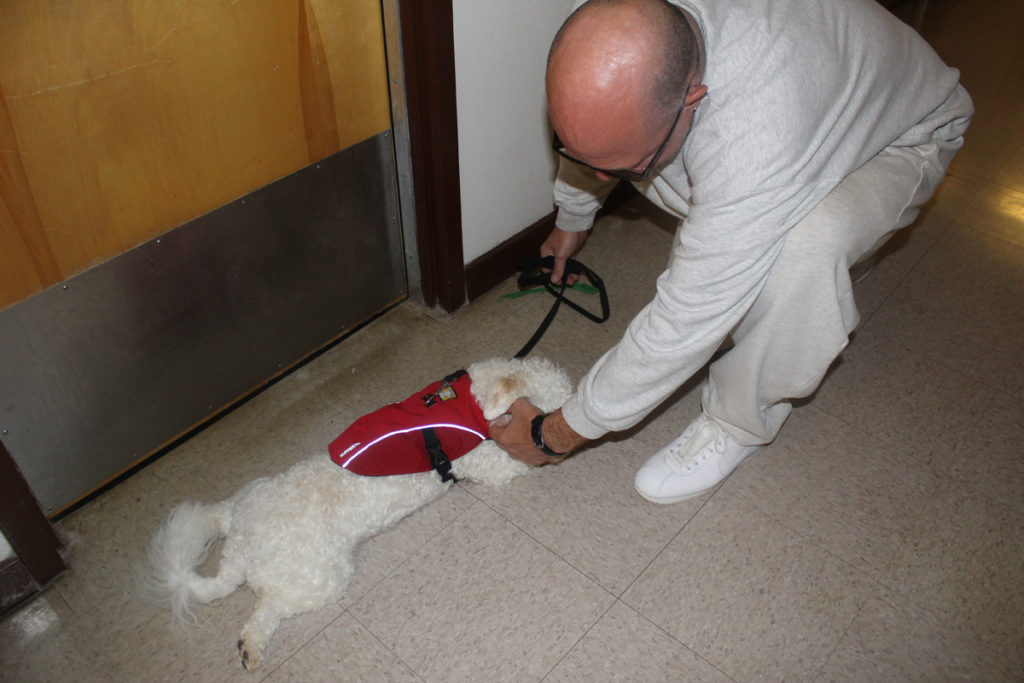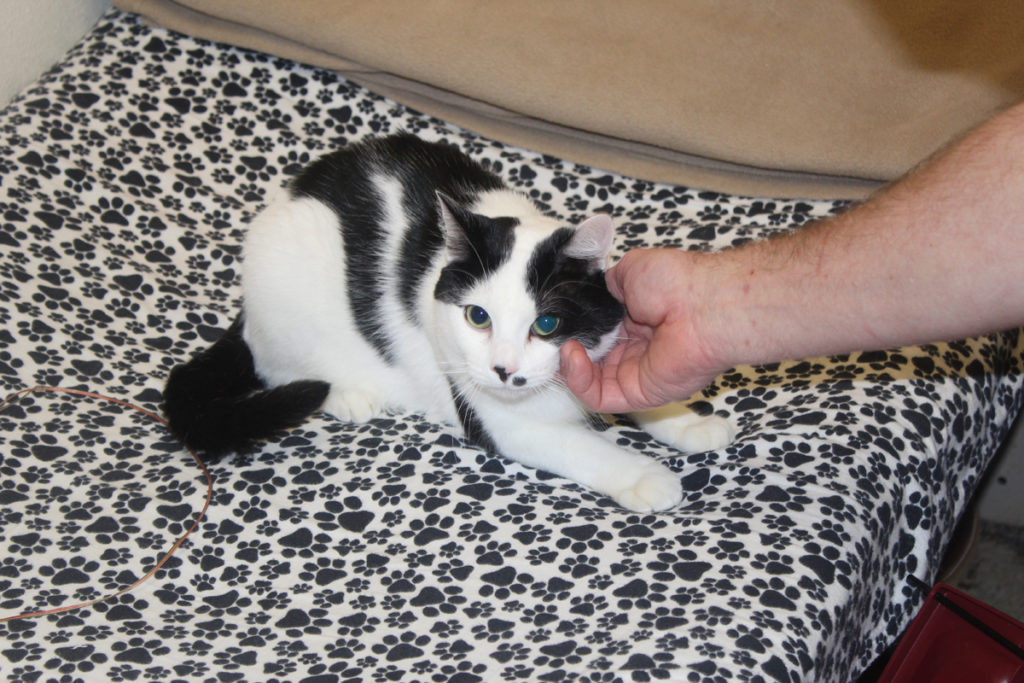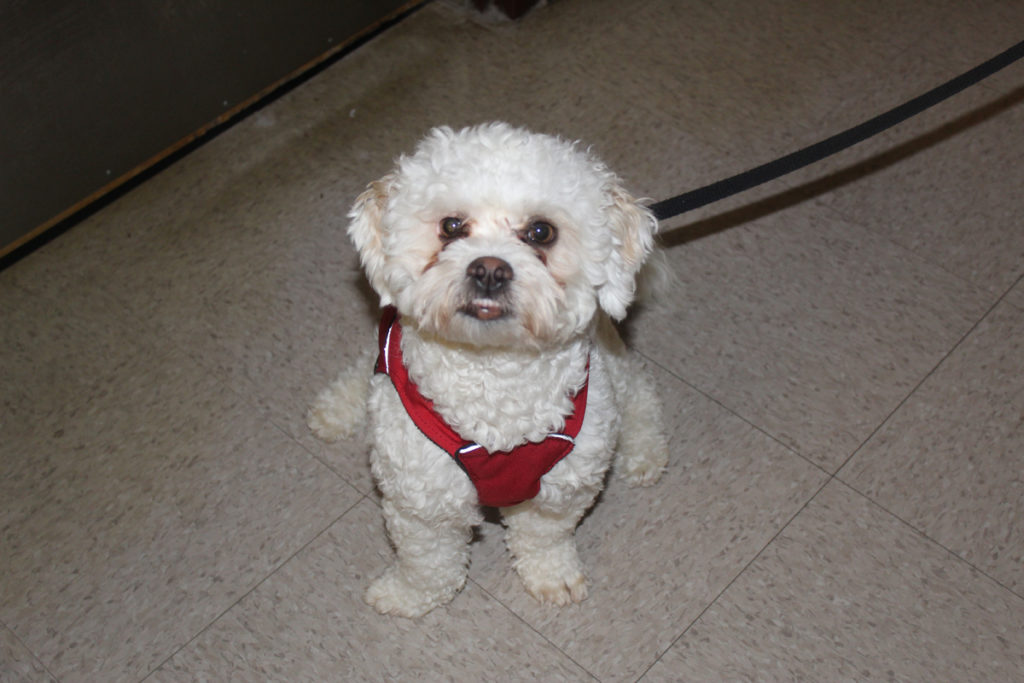YACOLT — After William Mulholland, an inmate at Larch Corrections Center in Yacolt, explains the different training he does with Stefan, a 4-year-old toy poodle mix that he is currently in charge of taking care of, he enthusiastically went into his room and brought out a book about dog training that he had purchased in order to better his training with Stefan.

“They’re so interested in learning everything they can about training the dogs,” said Lisa Feder, vice president of Shelter Operations at the Humane Society for Southwest Washington. “We give them this list of some suggested books and they immediately want to get them. We learn so much more about the dogs by having them here, and it’s positive reinforcement for the inmates and the dogs.”
The Dog Adoption Program is just one of several programs offered to the inmates at Larch through the Sustainability in Prisons Project, which aims to bring science education and nature into prisons. This project is a partnership founded by The Evergreen State College and the Washington Department of Corrections.
“When we first got Stefan, we didn’t know what to name him, so we decided that we were going to ask the next person who walked by what their name was and that was going to be his name,” Mulholland said laughing. “So, someone walked by, we asked him his name, he said Stefan, so that’s how he got his name.”
Larch just recently began participating in the Dog Adoption Program with the Humane Society within the last several months, and actually just held their first “dog graduation” this past week. Inmates at Larch, however, have been able to participate in the organization’s Cat Adoption Program since December of 2011.
“These are shelter animals that, for whatever reason, are not available for adoption quite yet,” Feder said of the dogs and cats that the Humane Society brings to Larch. “The cats especially sometimes need some more socialization before they are ready for adoption.”
The dog and cat programs are mutually beneficial for the Humane Society, the animals and the inmates who care for the animals. Feder said they have adopted out about 60-65 cats through the program so far, and hope to adopt how numerous dogs as well after they have gone through the eight-to-10-week program.
After going through the program with the animals, the dogs in particular, the inmates come out as very capable trainers, though they are not officially licensed or anything, Feder said.
“They go through the process and learn basic obedience training, and we would love it if they could go on to get their Canine Good Citizen Certification,” Feder said of the dog program. “This is all part of a bigger picture, we would like to be able to offer a dog training program for inmates at the Humane Society, so they might actually be able to get a job there or at another facility after they get out.”
In addition to basic obedience training and socialization, the inmates who participate in the dog program also teach their pups a variety of eye-catching tricks. Stefan, for example, can sit, bow and “stand for search” on command. Some of the dogs, such as 5-year-old Porter, could barely even be around other dogs at all before coming to Larch and being trained and socialized by their new inmate friends.
The Cat Adoption Program is slightly different than the dog program, as inmates focus more on socialization with the cats.
“At the time we started offering the cat program, there wasn’t much information on cat programs (in the prisons),” said Shawn Philiponis, a counselor at Larch. “Our superintendent wanted to do something different, so we decided to go for cats.”

Larch has had visitors from Oregon, Korea and Japan from correctional facilities there who want to see what Larch has accomplished with its cat program.
“We’ve moved that much further ahead,” Philiponis said.
Inmate Harold Bain has been participating in the Cat Adoption Program at Larch for the past two years, and he intends to continue to do so until he is eligible for work release in June of 2018. Bain currently shares his living quarters, along with his roommate, with a black-and-white kitty named Craven.
“It’s very therapeutic,” Bain said of taking care of the cats. “It not only passes the time, but we also help the cat and the cat helps us. All these cats and dogs, they help us.”
As he was talking, Bain attempted to coax Craven out from under his bed, but Craven was apparently feeling extra shy that day and only appeared for a brief second, only to run back under the bed and hide.
“We try to socialize them as much as we can,” Bain said. “We try to get them to come out into the hall. If that doesn’t work, we hold them and carry them different places. We take the time to work with them and play with them. We have to find that special way that they want to play, every cat is different. Some cats play like dogs, some cats like to be touched and others don’t. It’s a learning process.”

Bain said inmates who are caring for the cats have meeting with folks from the Humane Society every two weeks to talk about the progress each cat is making. He said they also fill out reports on the individual cats to let Humane Society staff know how they are doing.
Being in the program for two years, Bain has seen numerous cats come and go. Some get adopted and then end up coming back, others find loving forever homes.
“It’s sad to see some of them go,” Bain said. “It’s like having a new baby all over again each time.”
Other programs offered through the Sustainability in Prisons Project at Larch include a beekeeping program that inmates can participate in; endangered species conservation program, including rehabilitation of the Western pond turtle; gardens, growing food for donation; water use reduction and catchment; waste reduction led by the kitchen staff and more.
Larch started getting involved in the sustainability programs in 2003, and the hope is to continue to add more as they can.
“Studies show gardening, working in the soil, is as therapeutic for some individuals as a substance abuse program,” Philiponis said. “A bee program, or many of these other programs, can actually get any one of these individuals a job when they get out. That’s the goal, to give them those options.”




